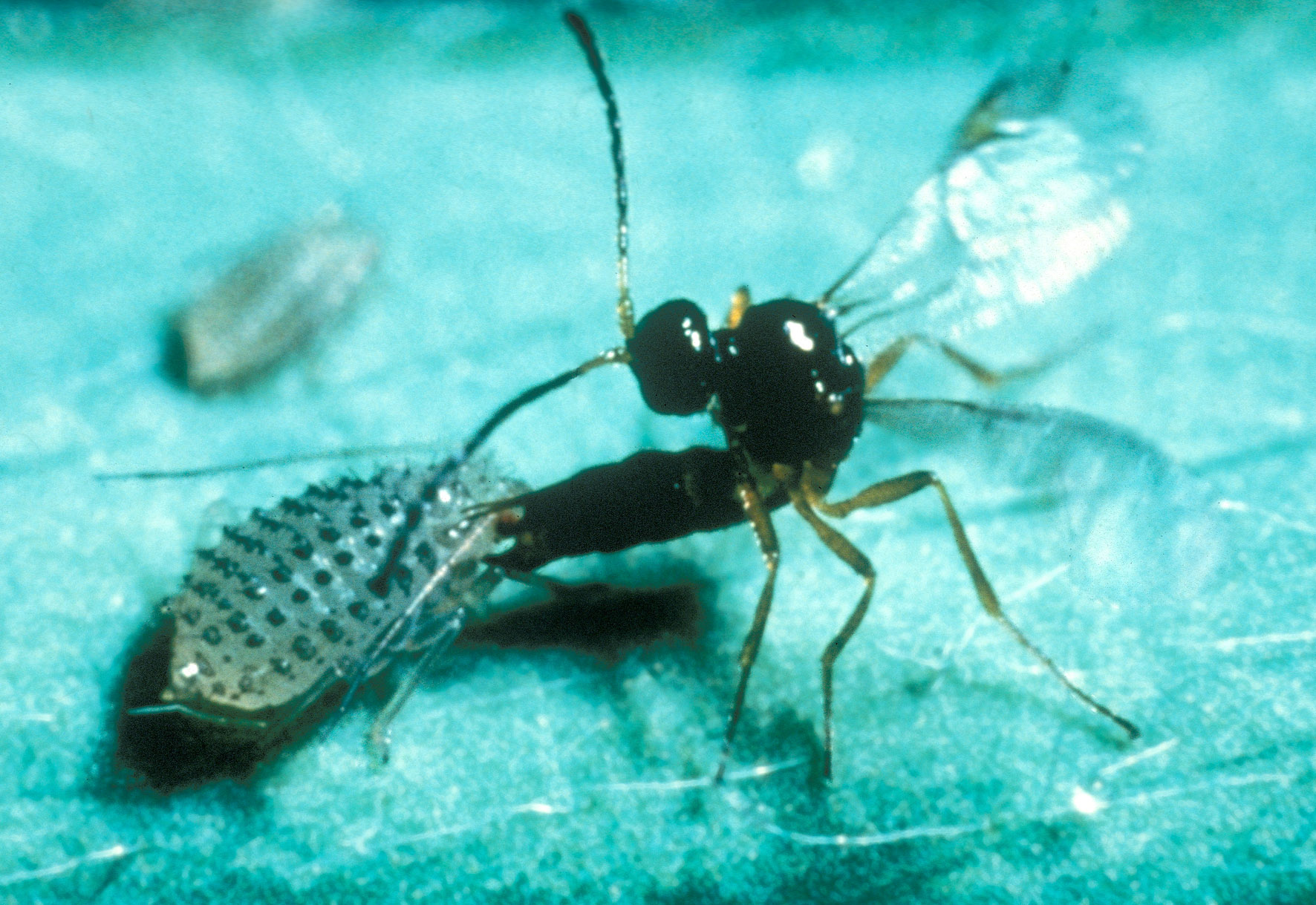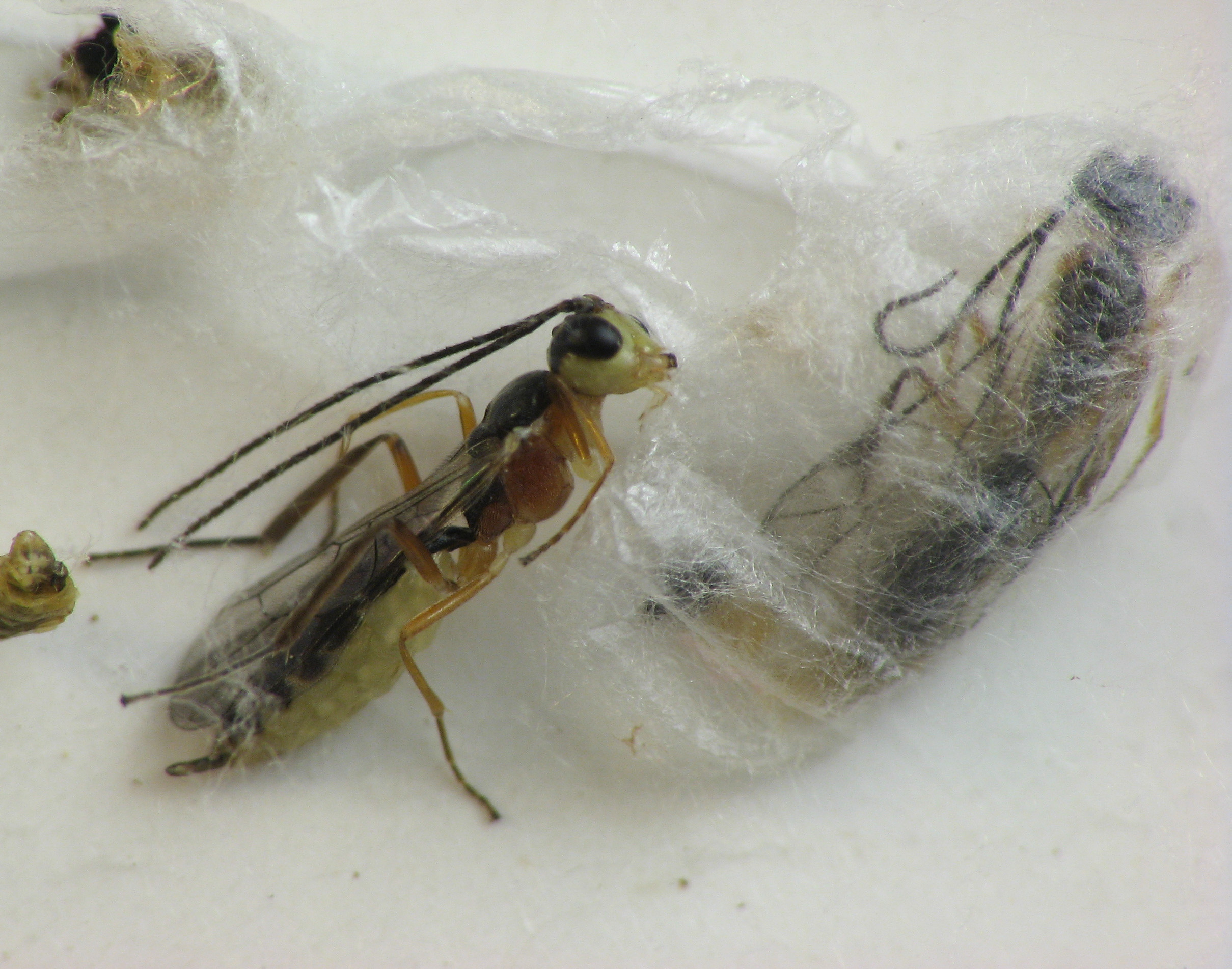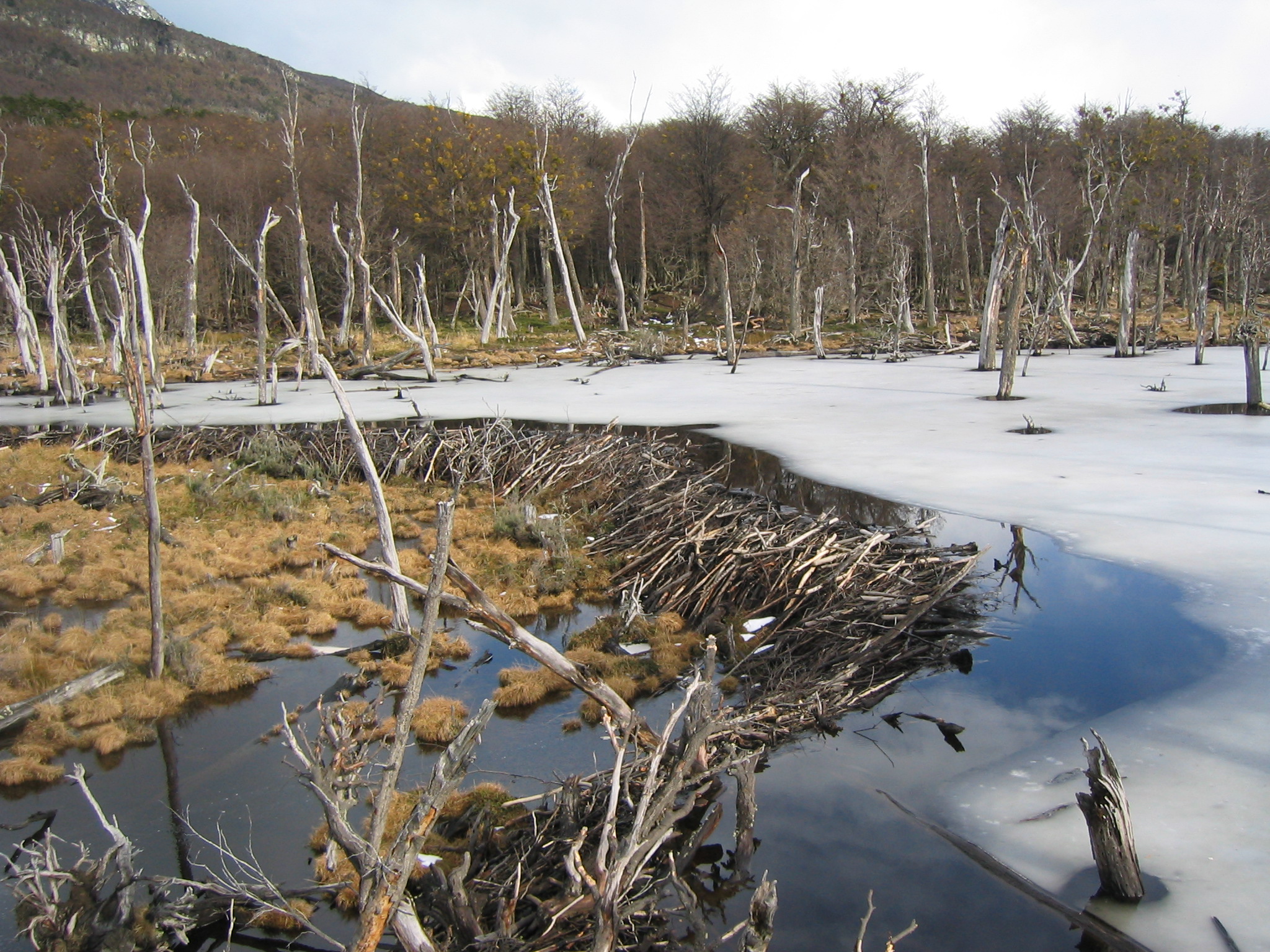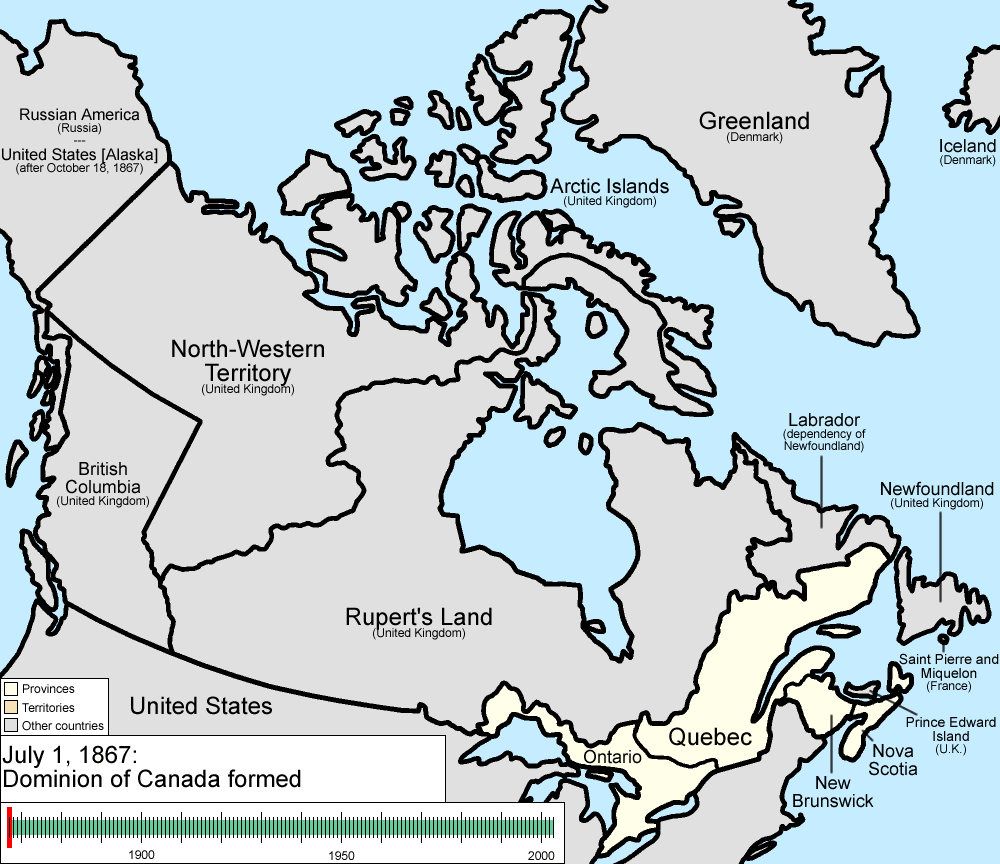|
Scarlet Lily Beetle
The scarlet lily beetle, red lily beetle, or lily leaf beetle (''Lilioceris lilii''), is a leaf beetle that eats the leaves, stem, buds, and flowers, of lilies, fritillaries and other members of the family Liliaceae. It lays its eggs most often on ''Lilium'' and ''Fritillaria'' species. In the absence of ''Lilium'' and ''Fritillaria'' species, there are fewer eggs laid and the survival rate of eggs and larvae is reduced. It is now a pest in most temperate climates where lilies are cultivated. Description This lily beetle belongs to the order Coleoptera, and the family Chrysomelidae, the leaf beetles. The adult lily beetle is about 6 to 9 mm (¼–⅜ in) in length, with relatively long legs and antennae. Its elytra (harder forewings) are bright scarlet and shiny. Its underside, legs, eyes, antennae and head are all black. It has large eyes, a slim thorax, and a wide abdomen.Ernst, CThe Lily Leaf Beetle (''Lilioceris lilii''): an unwelcome invader.2005 NALS Yearbook. North A ... [...More Info...] [...Related Items...] OR: [Wikipedia] [Google] [Baidu] |
Giovanni Antonio Scopoli
Giovanni Antonio Scopoli (sometimes Latinized as Johannes Antonius Scopolius) (3 June 1723 – 8 May 1788) was an Italian physician and naturalist. His biographer Otto Guglia named him the "first anational European" and the "Linnaeus of the Austrian Empire". Biography Scopoli was born at Cavalese in the Val di Fiemme, belonging to the Bishopric of Trent (today's Trentino), son of Francesco Antonio, military commissioner, and Claudia Caterina Gramola (1699-1791), painter from a patrician family from Trentino. He obtained a degree in medicine at University of Innsbruck, and practiced as a doctor in Cavalese and Venice.Newton, Alfred 1881. ''Scopoli's ornithological papers.'' The Willoughby SocietyScanned version/ref> Much of his time was spent in the Alps, collecting plants and insects, of which he made outstanding collections. He spent two years as private secretary to the bishop of Seckau, and then was appointed in 1754 as physician of the mercury mines in Idrija, a small to ... [...More Info...] [...Related Items...] OR: [Wikipedia] [Google] [Baidu] |
Coccinellidae
Coccinellidae () is a widespread family of small beetles ranging in size from . They are commonly known as ladybugs in North America and ladybirds in Great Britain. Some entomologists prefer the names ladybird beetles or lady beetles as they are not true bugs. Many of the species have conspicuous aposematic colours and patterns, such as red with black spots, that warn potential predators that they are distasteful. The majority of the more than 6,000 described species are generally considered beneficial insects, because many prey on herbivorous hemipterans such as aphids or scale insects, which are agricultural pests. Many coccinellids lay their eggs directly in aphid and scale insect colonies, ensuring their larvae have an immediate food source. However, some species such as the herbivorous Mexican bean beetle are agricultural pests. Etymology The name ''coccinellids'', created by Pierre André Latreille, is derived from the Latin word ''coccineus'' meaning "scarl ... [...More Info...] [...Related Items...] OR: [Wikipedia] [Google] [Baidu] |
Wasp
A wasp is any insect of the narrow-waisted suborder Apocrita of the order Hymenoptera which is neither a bee nor an ant; this excludes the broad-waisted sawflies (Symphyta), which look somewhat like wasps, but are in a separate suborder. The wasps do not constitute a clade, a complete natural group with a single ancestor, as bees and ants are deeply nested within the wasps, having evolved from wasp ancestors. Wasps that are members of the clade Aculeata can Stinger, sting their prey. The most commonly known wasps, such as yellowjackets and hornets, are in the family Vespidae and are Eusociality, eusocial, living together in a nest with an egg-laying queen and non-reproducing workers. Eusociality is favoured by the unusual haplodiploid system of sex-determination system, sex determination in Hymenoptera, as it makes sisters exceptionally closely related to each other. However, the majority of wasp species are solitary, with each adult female living and breeding independently ... [...More Info...] [...Related Items...] OR: [Wikipedia] [Google] [Baidu] |
Parasitoid
In evolutionary ecology, a parasitoid is an organism that lives in close association with its host (biology), host at the host's expense, eventually resulting in the death of the host. Parasitoidism is one of six major evolutionarily stable strategy, evolutionary strategies within parasitism, distinguished by the fatal prognosis for the host, which makes the strategy close to predation. Among parasitoids, strategies range from living inside the host (''endoparasitism''), allowing it to continue growing before emerging as an adult, to Paralysis, paralysing the host and living outside it (''ectoparasitism''). Hosts can include other parasitoids, resulting in hyperparasitism; in the case of oak galls, up to five levels of parasitism are possible. Some parasitoids Behavior-altering parasite, influence their host's behaviour in ways that favour the propagation of the parasitoid. Parasitoids are found in a variety of Taxon, taxa across the insect superorder Endopterygota, whose compl ... [...More Info...] [...Related Items...] OR: [Wikipedia] [Google] [Baidu] |
Fecal Shield
The fecal shield is a structure formed by the larvae of many species of beetles in the leaf beetle family, Chrysomelidae.Nogueira-de-Sá, F. and J. R. Trigo. (2002)Do fecal shields provide physical protection to larvae of the tortoise beetles ''Plagiometriona flavescens'' and ''Stolas chalybea'' against natural enemies?''Entomologia Experimentalis et Applicata'' 104(1) 203-06. It is composed of the frass of the insect and often its exuviae, or bits of shed exoskeleton. The beetle may carry the shield on its back or wield it upon its posterior end. The main function of the fecal shield is defense against predators.Bacher, S. and S. Luder. (2005)Picky predators and the function of the faecal shield of a cassidine larva.''Functional Ecology'' 19(2) 263–72. Other terms for the fecal shield noted in the literature include "larval clothing", "''kotanhang''" ("fecal appendage"), "faecal mask", "faecal pad", and "exuvio-faecal annex". Ecology Beetle larvae of the chrysomelid subfami ... [...More Info...] [...Related Items...] OR: [Wikipedia] [Google] [Baidu] |
Frass
Frass refers loosely to the more or less solid excreta of insects, and to certain other related matter. Definition and etymology ''Frass'' is an informal term and accordingly it is variously used and variously defined. It is derived from the German word ''Fraß'', which means the food takeup of an animal.M. Clark and O. Thyen. The Oxford-Duden German Dictionary. Publisher: Oxford University Press 1999. The English usage applies to excreted residues of anything that insects had eaten, and similarly, to other chewed or mined refuse that insects leave behind. It does not generally refer to fluids such as honeydew, but the point does not generally arise, and is largely ignored in this article. Such usage in English originated in the mid-nineteenth century at the latest. Modern technical English sources differ on the precise definition, though there is little actual direct contradiction on the practical realities. One glossary from the early twentieth century speaks of "...excreme ... [...More Info...] [...Related Items...] OR: [Wikipedia] [Google] [Baidu] |
Pupa
A pupa ( la, pupa, "doll"; plural: ''pupae'') is the life stage of some insects undergoing transformation between immature and mature stages. Insects that go through a pupal stage are holometabolous: they go through four distinct stages in their life cycle, the stages thereof being egg, larva, pupa, and imago. The processes of entering and completing the pupal stage are controlled by the insect's hormones, especially juvenile hormone, prothoracicotropic hormone, and ecdysone. The act of becoming a pupa is called pupation, and the act of emerging from the pupal case is called eclosion or emergence. The pupae of different groups of insects have different names such as ''chrysalis'' for the pupae of butterflies and ''tumbler'' for those of the mosquito family. Pupae may further be enclosed in other structures such as cocoons, nests, or shells. Position in life cycle The pupal stage follows the larval stage and precedes adulthood ('' imago'') in insects with complete metamo ... [...More Info...] [...Related Items...] OR: [Wikipedia] [Google] [Baidu] |
Soil
Soil, also commonly referred to as earth or dirt, is a mixture of organic matter, minerals, gases, liquids, and organisms that together support life. Some scientific definitions distinguish ''dirt'' from ''soil'' by restricting the former term specifically to displaced soil. Soil consists of a solid phase of minerals and organic matter (the soil matrix), as well as a porous phase that holds gases (the soil atmosphere) and water (the soil solution). Accordingly, soil is a three-state system of solids, liquids, and gases. Soil is a product of several factors: the influence of climate, relief (elevation, orientation, and slope of terrain), organisms, and the soil's parent materials (original minerals) interacting over time. It continually undergoes development by way of numerous physical, chemical and biological processes, which include weathering with associated erosion. Given its complexity and strong internal connectedness, soil ecologists regard soil as an ecosystem. ... [...More Info...] [...Related Items...] OR: [Wikipedia] [Google] [Baidu] |
Invasive Species
An invasive species otherwise known as an alien is an introduced organism that becomes overpopulated and harms its new environment. Although most introduced species are neutral or beneficial with respect to other species, invasive species adversely affect habitats and bioregions, causing ecological, environmental, and/or economic damage. The term can also be used for native species that become harmful to their native environment after human alterations to its food webfor example the purple sea urchin ('' Strongylocentrotus purpuratus'') which has decimated kelp forests along the northern California coast due to overharvesting of its natural predator, the California sea otter ('' Enhydra lutris''). Since the 20th century, invasive species have become a serious economic, social, and environmental threat. Invasion of long-established ecosystems by organisms is a natural phenomenon, but human-facilitated introductions have greatly increased the rate, scale, and geographic range ... [...More Info...] [...Related Items...] OR: [Wikipedia] [Google] [Baidu] |
Manitoba
, image_map = Manitoba in Canada 2.svg , map_alt = Map showing Manitoba's location in the centre of Southern Canada , Label_map = yes , coordinates = , capital = Winnipeg , largest_city = Winnipeg , largest_metro = Winnipeg Region , official_lang = English , government_type = Parliamentary constitutional monarchy , Viceroy = Anita Neville , ViceroyType = Lieutenant Governor , Premier = Heather Stefanson , Legislature = Legislative Assembly of Manitoba , area_rank = 8th , area_total_km2 = 649950 , area_land_km2 = 548360 , area_water_km2 = 101593 , PercentWater = 15.6 , population_demonym = Manitoban , population_rank = 5th , population_total = 1342153 , population_as_of = 2021 , population_est = 14 ... [...More Info...] [...Related Items...] OR: [Wikipedia] [Google] [Baidu] |
Maritime Provinces
The Maritimes, also called the Maritime provinces, is a region of Eastern Canada consisting of three provinces: New Brunswick, Nova Scotia, and Prince Edward Island. The Maritimes had a population of 1,899,324 in 2021, which makes up 5.1% of Canada's population. Together with Canada's easternmost province, Newfoundland and Labrador, the Maritime provinces make up the region of Atlantic Canada. Located along the Atlantic coast, various aquatic sub-basins are located in the Maritimes, such as the Gulf of Maine and Gulf of St. Lawrence. The region is located northeast of the United States's New England, south and southeast of Quebec's Gaspé Peninsula, and southwest of the island of Newfoundland. The notion of a Maritime Union has been proposed at various times in Canada's history; the first discussions in 1864 at the Charlottetown Conference contributed to Canadian Confederation. This movement formed the larger Dominion of Canada. The Mi'kmaq, Maliseet and Passamaquoddy peo ... [...More Info...] [...Related Items...] OR: [Wikipedia] [Google] [Baidu] |




.P8193313_NEAT.jpg)




